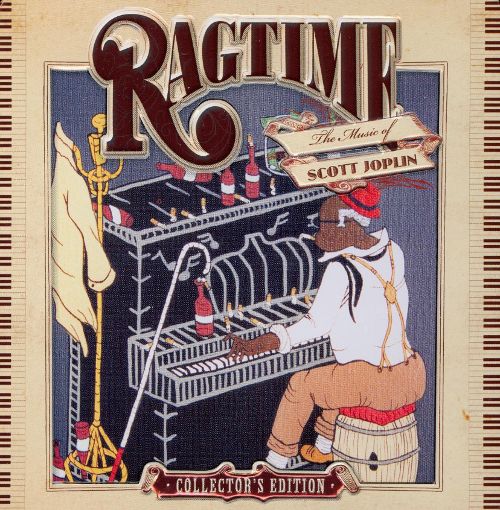Intro to Ragtime Video
Check out this Intro to Ragtime Video Below! Made by A’Shiah Rachel, Alix Swann, and Makenna Waller.
Video Transcript
Welcome Class! Today we are talking about Ragtime. In 1886, pianos were more common in American houses than bathtubs were. This time period of heavy piano playing influenced African American instrumental artists to develop ragtime. At the turn of the 19th century, black entrepreneurs started prospering in the sporting district of St. Louis, Missouri known as Chestnut Valley. The regular flow of traffic through St. Louis and the rest of the state created a demand for accommodations and amenities for travelers, and gave performers plenty of opportunities to make money. Ragtime was popular from 1896-1920.
Ragtime stemmed from the cakewalk period, which was a pre-ragtime dance form popular until about 1904. The cakewalk music is intended to be representative of an African-American dance contest in which the prize is a cake. Many early rags are cakewalk songs.
Ragtime did not only descend from the cakewalk songs, but also from jigs and march music played by African American bands, referred to as “jig piano” or “piano thumping”. It is not a vocal genre, it primarily focuses on the piano. One hand plays a straight/marching rhythm, and the other hand plays the syncopation that classifies these pieces as ragtime. There is no ad-libbing in this genre, and these rhythms are played directly as they are written down on paper.
As I mentioned before, syncopation is the essence of ragtime. According to some sources, the name “ragtime” may come from the “ragged or syncopated rhythm” of the right hand. It is a very difficult genre to play because the rhythms played by one hand are typically complex.
Ragtime was everywhere by the early 1900s–in sheet music, piano rolls, phonograph records, and ragtime piano playing contests, as well as in music boxes, vaudeville theaters, and bordellos. Some important people in the ragtime genre are Scott Joplin, Jellyroll Morton, James Scott, and Eubie Blake. In 1899, Scott Joplin’s “Maple Leaf Rag” was published, and still continues today to be one of the most famous ragtime pieces.
Ragtime led into jazz, but sadly it fell out of favor as jazz claimed the public’s eye after around 1917. Thank you students, I hope you enjoyed this quick intro to ragtime!


